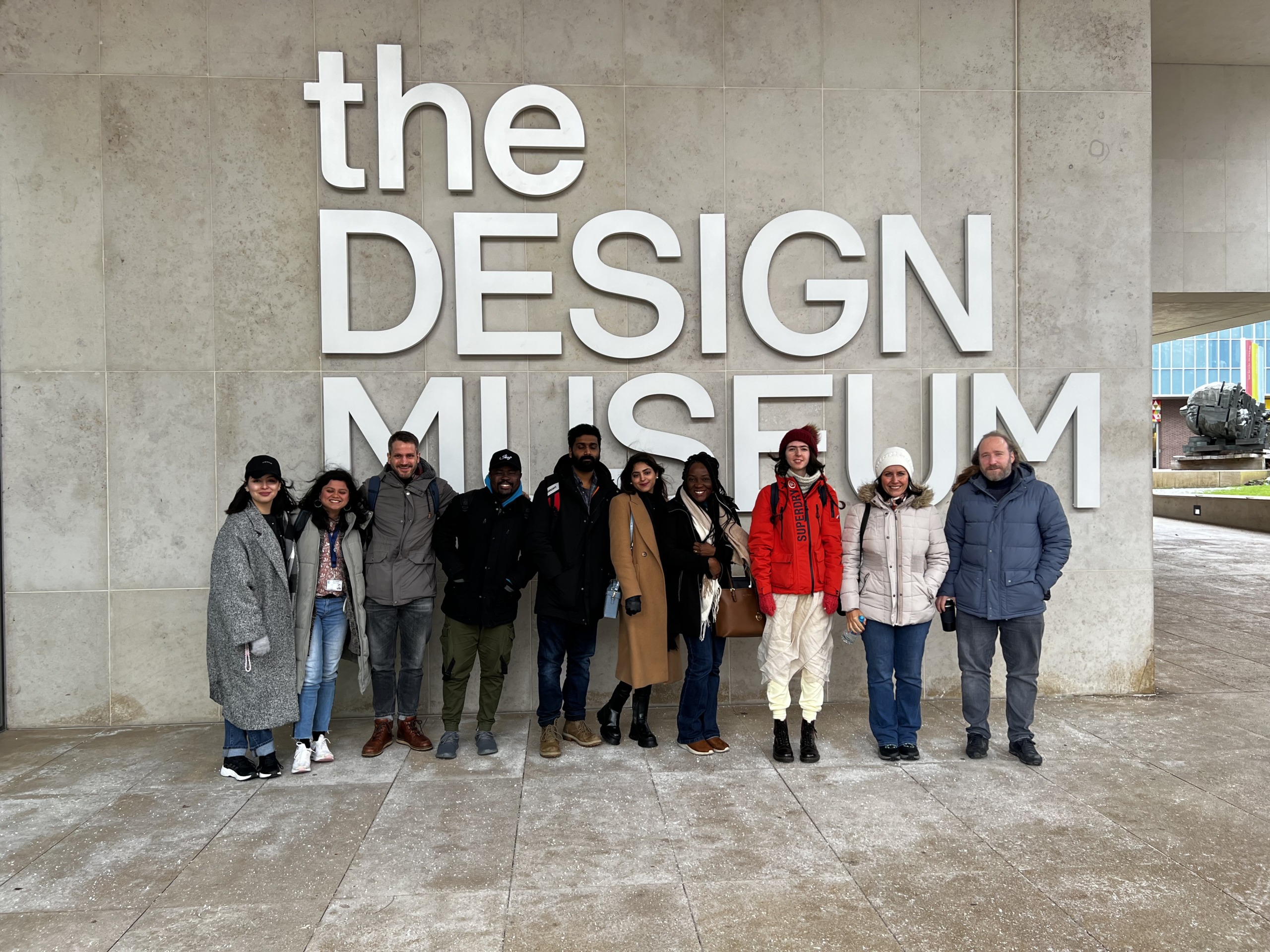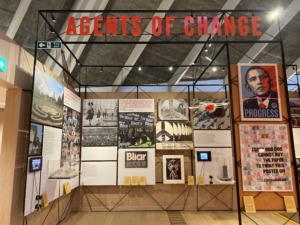Design as a Tool for Change
24/05/2023

Design as a Tool for Change: Exploring Circular Economy and Sustainability through a visit to the Design Museum
Design has become increasingly important in creating sustainable solutions for a better future. At the forefront of this movement is the concept of circular economy, where the focus is on designing products and systems with the aim of eliminating waste and reducing negative environmental impacts.
We had the opportunity as students from MDes Design Thinking from Cranfield University to visit the Design Museum in London, where I gained a deeper understanding of the role of design in promoting circular economy, whole system design, and sustainability.
Upon entering the museum, I was immediately struck by the various exhibitions that showcased the power of design in transforming our world. One such exhibition was the “Designer Maker User” exhibit, which highlighted the interplay between these three roles in creating products that are both functional and aesthetically pleasing. The exhibit featured a range of products, from everyday household items to high-tech gadgets, all designed with the goal of reducing waste and promoting sustainability.
As I moved through the museum, I also encountered several displays that showcased the power of whole system design. The “Internet of Things” exhibit, for instance, explored the role of system designs in connecting physical objects over the internet. Connected devices can amass vast amounts of data that can help us better understand how we use objects and the changes in how we live and work. This exhibit made it clear that whole system design can play a crucial role in addressing the perceived need to redesign development; not simply to harm the environment less, but rather to be truly restorative of nature and ecosystems, and society and communities through connectivity.
Also, the museum’s “Agents of Change” exhibit highlighted the role of design in shaping political campaigns and activism, highlighting the importance of considering the entire system in which a product or service exists. This exhibit made it clear that design can play a crucial role in promoting social and environmental justice, especially when it comes to advocating for systemic change.

Finally, a quick check-in at the “Kyoto Garden” near the museum was refreshing for students to learn about its history. The Koyoto Garden was constructed as part of the Japan Festival 1991 on the centenary of the Japan Society in British. It was built by the Kyoto Chamber of Commerce and Industry with the help of many Gardening Companies in Kyoto and was presented to the Royal Borough of Kensington and Chelsea as a gift to commemorate the long-lasting friendship between Great British and Japan.
Overall, my visit to the Design Museum was an inspiring and eye-opening experience that underscored the power of design in promoting a circular economy, whole system design, and sustainability. As we continue to grapple with the challenges of climate change and environmental degradation, design will play an increasingly important role in shaping our world for the better.
Choose Cranfield University,
Choose Design Thinking.
Categories & Tags:
Leave a comment on this post:
You might also like…
Preparing for assignments and exams?
Sorry! We know it seems a bit mean to mention the exams in January rather than looking forward to the break before it! However, we know many of you will be thinking about your forthcoming ...
Screening for FTSE 100 companies on Bloomberg
So you’re researching an index and need some data on its constituent companies? Bloomberg’s Equity Screening tool makes light work of this, not just for the FTSE, but for indices, exchanges and sectors worldwide. Type EQS ...
Accelerating my future: How Cranfield put me on the fast track to automotive safety innovation
Hello! I’m Michaela Kaiser, and I’m thrilled to share my journey studying abroad. I’m from Calgary, Canada, and I recently graduated from Cranfield’s MSc Automotive Engineering course. My path to Cranfield ...
From Myanmar to Cranfield: My path to Renewable Energy
As someone who is passionate about sustainability, my career goal is to build a path in the renewable energy sector. My aspirations comes from the benefits of developing sustainable energy sources and ensuring energy ...
From lifelong dream to circular economy leader: Q&A with Himesha Randeni on the Environmental Management for Business MSc
What does it take to turn a lifelong passion for the planet into a fulfilling and impactful career? For Himesha Randeni, the answer was the Environmental Management for Business MSc at ...
Library services over the Christmas period
Kings Norton Library will be open 24/7 throughout the holiday period as a study space. Library staff will work until 6pm on Friday 19 December and will resume their normal working hours from 9am on ...






